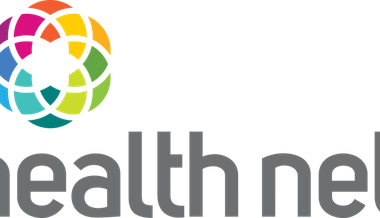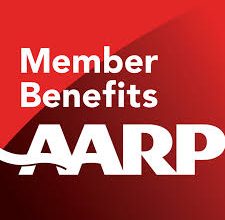A Comprehensive Guide to Individual Health Insurance
Health insurance is an important consideration for anyone living without employer-provided coverage. As an individual, choosing the right health insurance plan requires careful research and understanding of your needs and budget. This comprehensive guide aims to educate and empower you to make an informed decision about getting individual health insurance.
Understanding Your Options
There are a few main options available for obtaining individual health insurance:
Private Plans
The private insurance market allows individuals to purchase plans directly from insurance companies. Plan offerings and costs vary significantly between insurance providers and by geographic location. Some key factors that determine private plan premiums include your age, location, health status, and the coverage level you select (known as your deductible and out-of-pocket maximum amounts).
Benefits and coverage options also differ widely between private plans. Higher premium plans generally offer more generous coverage and lower out-of-pocket costs when utilizing services, while lower premium plans often carry higher deductibles and co-pays. Choosing the right balance of costs and coverage is an important consideration.
COBRA Continuation Coverage
If you recently left a job that provided health benefits, you may be eligible to maintain your former employer’s group health plan temporarily through COBRA coverage. COBRA allows you to stay on your ex-employer’s plan for up to 18 months after leaving your job, but you will be responsible for the full monthly premium plus a 2% administrative fee.
While COBRA coverage is an option to bridge gaps in insurance, the premiums are often unaffordable without the employer contribution. Carefully weigh the costs before electing COBRA to ensure it is a suitable short-term solution for your needs and budget.
Health Insurance Marketplaces
Established under the Affordable Care Act (ACA), Health Insurance Marketplaces allow individuals to easily compare and purchase qualified health plans. Plans are offered at specific metal-tier levels (Bronze, Silver, Gold, Platinum) that correspond to different coverage percentages and out-of-pocket maximums.
Additionally, many households who enroll through a Marketplace may qualify for federal subsidies to lower monthly premium costs based on household size and income. Marketplace plans also guarantee coverage of essential health benefits and prevent discrimination based on pre-existing conditions. Exploring available plans and subsidies on your state’s Marketplace website is recommended.
Taking Inventory of Your Needs
Before selecting an individual health plan, take time to thoroughly assess your health needs and circumstances to identify what is most important to cover. Key factors to consider include:
Your Health Status and Medical History
Think about any pre-existing conditions, chronic health issues, prescriptions, or anticipated medical expenses you expect to incur in the next year. Plans vary widely in how they cover these costs, so consider ones with comprehensive coverage if applicable. Anticipating your medical needs will inform choosing the right deductible amount for your budget.
Your Doctors and Current Providers
Check that your preferred doctors and facilities participate in-network with potential plan options. Nothing is worse than discovering after enrolling that your providers don’t accept your coverage. Conversely, choosing a plan with low premiums may result in higher out-of-pocket costs if forced to use out-of-network care.
Access to Specialists and Major Facilities
In addition to primary care, factor in any anticipated specialists visits or need for major medical facilities. Consider plans that offer robust access to specialists, hospitals, urgent care centers, and pharmacies near your home. Complex or chronic conditions will benefit from plans with large, specialized provider networks.
Prescription Drug Coverage
Review all medications and determine out-of-pocket pharmacy costs under each potential plan’s drug formulary. Some plans cover generic drugs at lower costs than brand alternatives. Choosing a plan that includes your prescriptions at an affordable price point is critical for ongoing treatment adherence.
Taking an honest inventory of your true medical needs and preferences will help match you to the most suitable individual health plan design and provider network available. Don’t overlook this crucial step in planning.
Understanding Plan Features
Once you’ve profiled your healthcare needs, familiarize yourself with key insurance terms and features to find the best-fitting coverage levels:
Deductible
The deductible is the amount you must pay out-of-pocket each year before your health insurance kicks in. Higher deductible plans generally have lower monthly premiums. But be sure your budget and savings can cover medical expenses up to your deductible amount.
Co-Pay
A flat fee you pay for medical services like doctor visits, lab work, or prescriptions after meeting your deductible. Co-pays vary between plans and by type of service. Those needing frequent primary care will benefit from lower co-pay options.
Co-Insurance
The percentage of a covered medical bill you pay after meeting your deductible, with your insurer paying the rest. For example, a 20% co-insurance would require you to pay 20% of allowed charges after your deductible is met.
Out-of-Pocket Maximum
The most you’ll have to pay in a year for covered medical services. Generally once you hit the out-of-pocket maximum, your insurance covers 100% of additional medical bills for the rest of the year. This provides financial protection from catastrophic expenses.
Network Coverage
The facilities, providers, and pharmacies your plan contracts within its provider network. Using in-network services ensures lowest costs. Check if services require referrals or pre-approval from a primary care doctor. Out-of-network coverage often has much higher costs.
Getting Help Enrolling
Choosing a suitable individual health plan involves weighing many important factors. Don’t hesitate to leverage resources and expertise when enrolling:
Certified Insurance Agents or Brokers
An experienced agent can provide unbiased guidance on your coverage options based on your needs and budget. Agents have specific product knowledge that can help compare benefits, networks, and prices of available plans. Using an agent is free or low-cost for assistance enrolling in most plans.
Navigators and Assisters
If enrolling through a Health Insurance Marketplace, free help from trained Navigators or Assisters is available nationwide. They provide impartial guidance specific to Marketplace options and requirements without needing personal health details. Assistance by phone, online, or in-person appointments helps simplify understanding plans and subsidies.
Government Resources
Additional support can be found through sources like Medicaid/CHIP, hospitals with financial aid programs, or state departments of insurance. Local coverage restrictions and exemption periods apply. By researching all potential coverage paths, you can ensure no affordable option is overlooked.
Don’t hesitate to utilize objective experts for interpreting health insurance lingo and comparing suitable choices relevant to your needs. Enrolling in the right plan significantly impacts your healthcare access and financial security moving forward.
Maintaining Coverage Year-Round
Once enrolled in a plan, remain proactive to maintain continuous health insurance coverage:
Annual Open Enrollment Period
Most plans have an annual Open Enrollment window, usually in the fall, where you can switch plans or make changes for the following year. This ensures you can pick a plan that still meets your needs for the upcoming year.
Life Changes
Report moves, income changes, marriages, births or divorces promptly to update your eligibility. These qualify you for a Special Enrollment Period to change plans outside the standard Open Enrollment window. Failing to update critical life changes could affect coverage availability or subsidies.
Auto-Renewal Notices
Carefully review renewal notices for upcoming plan years, which outline any changes in coverage, costs, providers or formularies. Premium increases or provider network reductions may necessitate changing plans.
COBRA Notification Timelines
If ending employment, know your window to elect and pay for temporary COBRA coverage before losing employer-sponsored health benefits. COBRA coverage lapses permanently if payment deadlines are missed.
Documentation and Payment Deadlines
Maintain records of plan enrollment forms, ID cards, premium receipts, rejection or appeal letters for future reference if claims or eligibility issues arise. Set calendar reminders for auto-pay enrollment and premium due dates to avoid coverage termination.
With annual vigilance, you can ensure continuing access to necessary healthcare through ongoing or alternative insurance plans. Taking a proactive role in administrating your coverage helps protect you and your family’s physical health and financial security long-term.
Making the Best Choice
Weighing options and gathering expert assistance empowers you to pick individual health insurance strategically based on your unique situation:
- Consider overall costs including premiums, deductibles, co-pays and network limitations. Determine what fits your budget while covering your anticipated medical needs.
- Evaluate carrier reputation, provider networks and coverage details. Consumer review sites help compare customer service and claims experiences between insurers.
- Seek plan recommendations from agents based on your medical and coverage criteria identified earlier. An expert second opinion validates your selection matches your specific criteria.
- If eligible, take advantage of any marketplace subsidies to lower premium costs. Subsidies may expand your coverage choices.
- Confirm proper documentation and payment methods are in place to avoid issues activating your selected plan on time.
By conducting thorough research informed by your healthcare needs, suitable options can be narrowed enabling choosing the optimal individual





